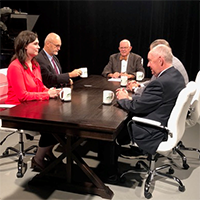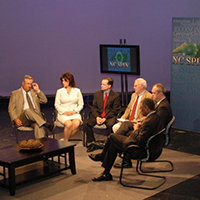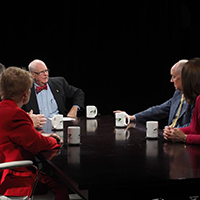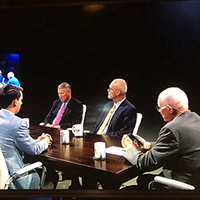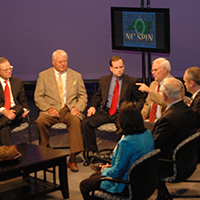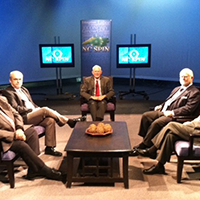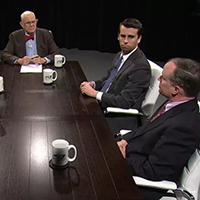Human cost of Wake County's worsening homeless crisis
Published February 13, 2025
EDITOR'S NOTE: Brian Klausner is executive director of the WakeMed Center for Community Health, Innovation and Equity. He is author of In the Gaps: Better Understanding the Expensive Human Suffering of Chronic Homelessness.
This past Dec. 21, the first day of winter and the longest night of the year, communities across our nation quietly gathered to remember their residents who died in 2024 while experiencing homelessness. In Raleigh, this year’s list of names was way too long. As it was last year. As it will be next year.
The list contained the names of too many brothers and sisters, mothers and fathers, wives and husbands; cousins, childhood best friends, teammates and first loves ... all sons and daughters.
It contained the names of too many young people whose deaths are yet another data point contributing to the disturbingly low life expectancy associated with homelessness, which historically hovers around 50. Many suffered expensively, with individual annual costs that often exceed six figures.
It is often a challenge to get people to pay attention to the realities of the unhoused patients we serve. Empathy is exhausting. Blame is not.
So we, as a society, often use the tools of dehumanization to blame so we do not have to resonate with their suffering. We move on, leaving root causes expensively unaddressed. We continue to waste money, failing to live up to what we can be as a society, despite the obvious and public displays of suffering metastasizing on our streets.
With the Department of Housing and Urban Development recently releasing their 2024 data demonstrating a staggering 18% increase from last year’s record highs, the growing national crisis of homelessness is clearly out of control. In Raleigh our numbers have more than doubled since 2020.
The main current driver of homelessness is not mental illness or addiction; it is simply supply and demand of affordable housing. However, as we address the housing shortage, we must simultaneously improve strategies to assist those suffering from chronic homelessness, defined as “people who have experienced homelessness for at least a year — or repeatedly — while struggling with a disabling condition such as a serious mental illness, substance use disorder or physical disability.”
These are individuals who are not able to escape from temporary homelessness, instead getting stuck in its expensive—and often fatal—chronic state. The severity of their underlying pathologies, and the inefficiencies of our response, consume our increasingly limited resources.
Perhaps if we pause, think and debate we will discover intuitive bipartisan solutions that direct us back to commonly shared values and principles that, if we are smart, should unite us instead of divide us. Ones that we often loudly proclaim in our living rooms, boardrooms, classrooms and congregations yet struggle to live up to.
Perhaps we can start holding ourselves accountable for how we efficiently identify and address root causes of homelessness instead of expensively exacerbating them.
I can think of no better time as we enter into the new year to strive alongside one another in the direction of our deeply held, widely shared principles of humanity to address the growing social crisis of homelessness in our communities. It could serve as an awesome reminder of how we should operate as a society to tackle our largest and most expensive social issues.
Perhaps on Dec. 21, 2025, lists of names read in communities across our nation will be shorter and we will be a bit closer to being a society that efficiently lives up to the principles to which we avow.
Capitol Broadcasting Company's Opinion Section seeks a broad range of comments and letters to the editor.

